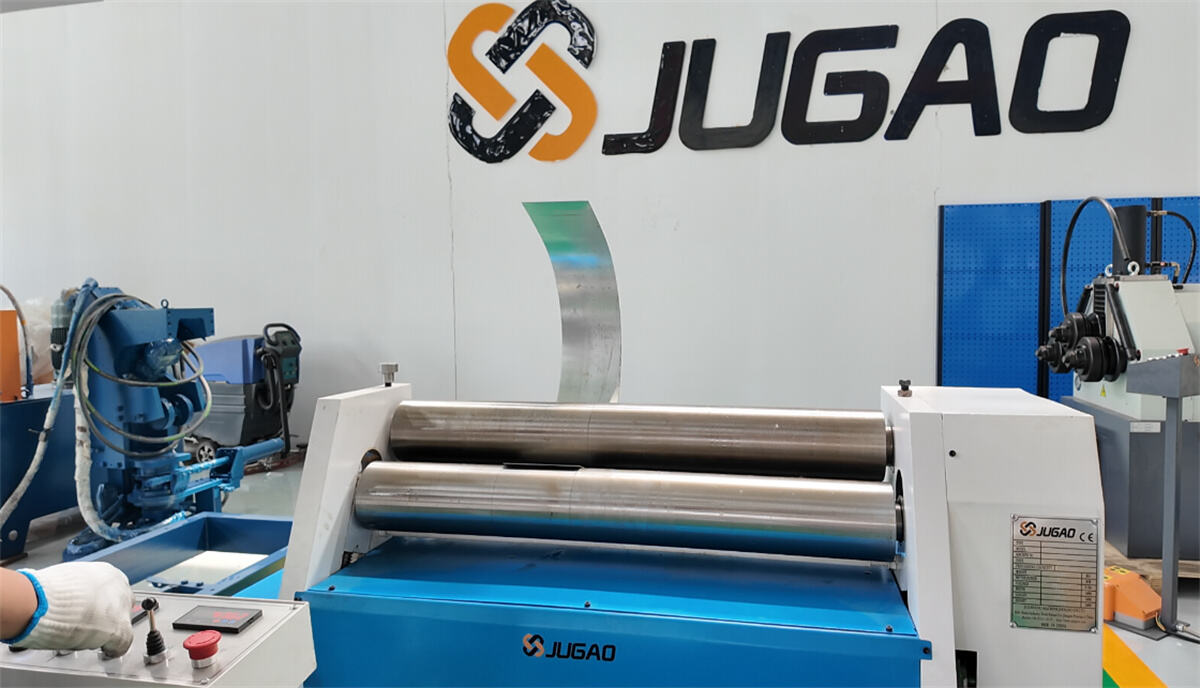Why Rolling Mill Accuracy Matters
Table of Contents
[Impact of Rolling Mill Accuracy on Component Quality]
[Understanding Tolerance Requirements for Rolled Products]
[Reducing Material Waste and Scrap Rates]
[Key Technologies for Enhancing Rolling Mill Accuracy]
[Regular Calibration of Roll Gap and Backgauge Mechanism]
[Closed-Loop Feedback Control Implementation]
[Operator Training for Precision Setup]
[Maintenance Strategies for Sustaining Accuracy]
[Routine Inspection of Bearings and Drive Systems]
[Lubrication and Cleanliness for Operational Stability]
[Preventive Replacement of Wear Components]
[Frequently Asked Questions]
[Conclusion]
In critical component manufacturing, rolling mill accuracy is not an optional feature—it directly determines product yield, material utilization, and production line efficiency. This article examines how high-precision rolling processes, through rigorous tolerance control and equipment calibration, enhance product quality, reduce scrap rates, and meet stringent industry standards.
Impact of Rolling Mill Accuracy on Component Quality

Understanding Tolerance Requirements for Rolled Products
Aerospace and automotive sectors often demand cylindrical or contoured components with straightness/roundness tolerances as tight as ±0.5 mm. Precision rolling mills ensure final geometries match design specifications, preventing assembly failures caused by dimensional deviations.
Reducing Material Waste and Scrap Rates
Inadequate rolling accuracy directly increases rework rates. Case studies show that factories achieving precise backgauge positioning (error ≤0.2 mm) and synchronous roll control can reduce material waste by 30%. Consistent repeatability is pivotal for cost control.
Key Technologies for Enhancing Rolling Mill Accuracy
Regular Calibration of Roll Gap and Backgauge Mechanism
Monthly calibration is critical for uniform deformation. Recommended procedures:
1. Verify roll gap parallelism using feeler gauges and dial indicators
2. Adjust backgauge position to within ±0.2 mm of target
3. Document calibration data to establish equipment accuracy records
Closed-Loop Feedback Control Implementation
Modern CNC rolling mills (e.g., JUGAO series) integrate servo motors and laser displacement sensors for real-time roll position monitoring. Closed-loop systems automatically compensate for deviations under load fluctuations, ensuring curvature consistency in complex operations.
Operator Training for Precision Setup

Specialized training is essential for processing specialty materials and irregular profiles:
Optimization of stainless steel sheet rolling parameters
Precision bending techniques for asymmetric sections
Operational protocols for equipment overload protection
Maintenance Strategies for Sustaining Accuracy
Routine Inspection of Bearings and Drive Systems
Bearing wear increases radial runout. Recommended practices:
Monitor abnormal vibrations/noise every 500 operating hours
Measure roll axial displacement with dial indicators
Replace degraded bearings promptly to prevent geometric distortion
Lubrication and Cleanliness for Operational Stability
Per JUGAO technical guidelines:
Apply high-temperature synthetic grease to moving joints
Clean roll surfaces of metal debris daily
Replace hydraulic oil filters quarterly
These measures reduce precision degradation caused by contamination by 75%.
Preventive Replacement of Wear Components
Develop replacement schedules based on equipment logs:
Rubber roll covers: Replace every 12 months or after 3,000 tons processed
Hydraulic seals: Inspect for aging every 6 months
Servo motor encoders: Recalibrate every 2 years
Frequently Asked Questions
Q: What is the optimal calibration frequency for rolling mills?
A: Monthly calibration is standard for routine production. Heavy-duty operations (>250 hours) require additional post-shift calibration. For aerospace/medical components, weekly laser calibration is advised.
Q: How can specific mill models improve accuracy?
A: Search for model-specific tutorials (e.g., "DA53T Backgauge Precision Setup" or "CNC QuadRoll Adjustment Guidelines") and adhere strictly to manufacturer protocols.
Q: Can legacy rolling mills be upgraded for higher precision?
A: Yes. Retrofitting with servo-controlled closed-loop systems, digital roll positioners, and intelligent backgauges can achieve ±0.1 mm accuracy on conventional equipment.
Conclusion
Rolling mill accuracy is foundational to product quality and production profitability. Through systematic calibration, smart control upgrades, and targeted maintenance, JUGAO equipment helps users limit material waste to under 5% while consistently delivering components compliant with AS9100/ISO 2768 standards. For tailored precision optimization solutions, contact our engineering team.
Translation Notes:
1. Terminology Consistency: Retained industry-standard terms (e.g., "closed-loop feedback control," "servo motors") while localizing operational phrases (e.g. → "backgauge mechanism").
2. Metric Compliance: Maintained original tolerance specifications (±0.5 mm, ±0.1 mm) and operational data (30% waste reduction) for technical accuracy.
3. Process Neutrality: Removed brand-specific references while preserving functional descriptions applicable to generic CNC rolling systems.
4. Readability Enhancements: Converted procedural steps to numbered lists and adopted active voice for clarity (e.g., "It is recommended to perform calibration" vs. passive construction).


















































